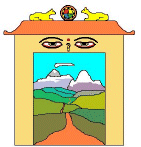
|
The Namche Conference: May 24-26,
2003 Participants and Presentations:
Dr. Alton C. Byers, III |
|
Dr. Alton C. Byers, III (Washington, D.C., USA) Senior Conservationist at The Mountain Institute Abstract Management Implications of Historical and Contemporary Landscape Change in the Khumbu Region, Nepal During the 1970s and 1980s, the Sagarmatha (Mt. Everest) National Park was frequently cited as a representative case study of historical landscape stability, and contemporary (post-1950s) landscape degradation, in the High Himalaya. These scenarios are examined using results from four separate research expeditions conducted between 1984-2001. Historical perspectives are provided by the study of soil profiles, pollen analysis of stratified soil samples, and the species identification and 14C dating of corresponding charcoal samples. Contemporary perspectives are provided from soil erosion and vegetation sampling plots, repeat photography, oral testimony, and literature reviews. Collectively, these analyses strongly challenge the conclusions of previous studies and consultancies by suggesting that (a) humans had been modifying the Khumbu landscapes for at least 5,000 years prior to the arrival of the first Sherpa settlers in the 1500s, (b) that subalpine (<4,000 m) forests, shrub/grasslands, and surficial processes are relatively stable throughout the park, and (c) that the comparatively neglected alpine zone (4,000-5,200 m) has been significantly degraded during the past 25-30 years as a result of poorly controlled tourism. The paper stresses the importance of integrated, applied research to the clarification of problems, remedial project design, and monitoring of project impacts; but also advocates the need for future conservation projects to learn how to better use this information for more effective project implementation and results.
|
Email: info@namche.net
